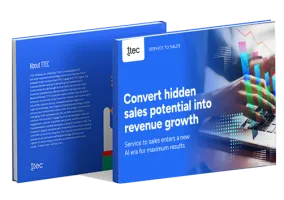If you want to improve your sales, one thing you might profitably consider is reducing the number of choices you offer to customers. Choices add complexity to the buying decision and complexity complicates things.
Let me start with a personal story. A few days after our family moved into a new house my wife took me furniture shopping. We needed a new sofa, she said, to match some of the other new stuff we had acquired for our expanded living room. As we neared the furniture super store, I saw a billboard atop it proclaiming, “Thousands of Sofas to Choose From!” and my heart just sank. I mean, wouldn’t yours? This was going to be just AWFUL!
As contrary as it might seem, you are not doing your customer any favor by offering thousands of choices, or even dozens. The act of choosing is an imposition. Fundamentally, you are asking your customers to do your work for you. Yes, the customer will want something just right, and yes, every customer may want something different. But choosing it is still an onerous activity.
It is a well-known principle in the direct marketing business that one of the surest ways to reduce the response rate in any communication with a customer is to require the customer to make a choice. Want fewer people to respond to your offer? Be sure to ask whether they prefer Option A or Option B. Want a further reduction in response? Offer Option C. Simply having to make that choice is, by itself, an extra burden of effort that more often than not overwhelms whatever likelihood you had of getting any response in the first place.
This doesn’t mean that choice is always wrong, but it should be approached carefully. One wise use of customer choice is learning the customer’s actual preferences to gather actionable insight. An automotive company I once worked with launched a loyalty program and offered new members their choice of gift for joining: A pair of racing gloves with the brand’s logo on them, a package of three children’s videos, or a collapsible umbrella and road atlas. In this case, making the choice was extremely simple, and the option chosen revealed a great deal to the auto company with respect to how to treat that customer in future interactions.
And that’s the other secret to increasing sales: Remembering what customers tell you about their preferences the first time they tell you. This customer insight should allow you to get closer to what they want the next time. Don’t be one of those companies that makes customers tell them the same preferences again and again.
Another wise use of choice is when it serves as a mechanism to stimulate your customers’ thinking and to give them ideas. Not all customers really know what they’re searching for. They may prefer to meander, trying to zero in on something. But the fact that a particular customer likes to meander is itself customer insight you should tuck away. Different customers view the shopping experience differently.
If you have a wide variety of sizes, specifications, prices, colors, delivery options, and the like, then one way to simplify the situation for your customers is to mass-customize. Don’t eliminate the choosing process altogether, but reduce it by using categories. Modules. Imagine, for instance, that the furniture super store my wife and I visited had made this offer to us, online: “Pick the price range, base colors, and preferred styles you will be shopping for and before you come to the store we’ll propose a selection of no more than 10 ‘most-likely’ choices to start your search…”
Want more sales? Simplify the buying experience by reducing the number of choices customers have to make in order to get what they want. ?















